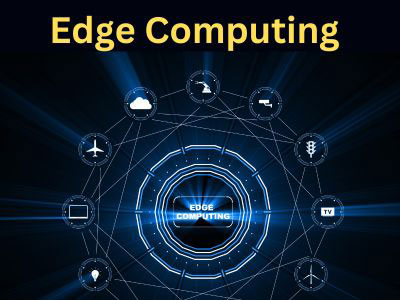Does Edge Use AI?
Key Takeaway
Yes, edge computing uses AI to enhance its capabilities by enabling real-time decision-making and analytics at the data source. By processing data locally, Edge AI reduces latency and improves response times, making it ideal for applications like autonomous vehicles, industrial automation, and smart city systems.
AI-driven edge applications include predictive maintenance, facial recognition, and real-time monitoring in healthcare. The combination of edge computing and AI delivers benefits like faster insights, reduced cloud dependency, and enhanced data security. This synergy is shaping the future of intelligent systems.
AI-Powered Capabilities in Edge Computing
Edge computing has evolved beyond simple data processing, now integrating artificial intelligence (AI) to unlock smarter capabilities. AI-powered edge computing enables devices to process and analyze data locally, making decisions without relying on centralized systems. This advancement allows for real-time responsiveness and enhanced operational efficiency.
For instance, edge AI can recognize patterns, detect anomalies, and automate responses in milliseconds. In a manufacturing plant, edge devices equipped with AI monitor machine performance, identifying potential failures and optimizing production workflows instantly. Similarly, in retail, AI at the edge analyzes customer behavior data to personalize shopping experiences in real time.
The fusion of AI and edge computing creates an ecosystem where data is not just collected but interpreted and acted upon locally. This capability is transforming industries, making edge computing not only faster but also smarter and more adaptive to complex environments.

Real-Time Analytics with Edge AI Integration
One of the standout features of edge AI is its ability to perform real-time analytics. Unlike traditional systems that send data to cloud servers for analysis, edge AI processes information directly at the data source. This drastically reduces latency and ensures immediate insights, which are critical for time-sensitive applications.
Consider autonomous vehicles as an example. Edge AI processes data from cameras, lidar, and sensors on the fly, enabling split-second decisions to navigate traffic or avoid obstacles. In healthcare, wearable devices with edge AI continuously monitor patient vitals, alerting doctors to irregularities instantly.
The integration of AI into edge computing enhances its analytical capabilities, allowing businesses to react to changes as they happen. This ability to combine real-time data processing with intelligent decision-making is revolutionizing industries, making systems more efficient and responsive.
Examples of AI-Driven Edge Applications
The combination of AI and edge computing has led to groundbreaking applications across various sectors. In industrial automation, edge AI powers predictive maintenance systems. These systems monitor equipment in real time, detect potential failures, and schedule repairs before breakdowns occur, reducing downtime and costs.
In smart cities, AI-driven edge devices manage traffic flow by analyzing data from road sensors and cameras. They can adjust traffic signals dynamically to reduce congestion and improve safety. Similarly, edge AI enhances public safety by powering surveillance systems that detect suspicious activities and alert authorities in real time.
Another compelling example is in agriculture, where drones equipped with edge AI analyze soil and crop data during flight. These insights enable farmers to optimize irrigation, fertilization, and harvesting processes. These applications highlight how edge AI is making industries smarter, more efficient, and better equipped to handle complex challenges.
Benefits of Combining Edge Computing and AI
The synergy between edge computing and AI brings numerous benefits, making it a powerful combination for modern systems. First, it reduces latency by processing data locally, ensuring faster decision-making. This is crucial for applications like autonomous vehicles, where even a slight delay can have significant consequences.
Second, combining edge computing and AI enhances privacy and security. Sensitive data can be analyzed on-site rather than being transmitted to central servers, reducing the risk of breaches. For example, a smart home system with edge AI can process video footage locally, ensuring that private data never leaves the premises.
Additionally, this combination optimizes bandwidth usage. By analyzing data at the edge, only essential information is sent to the cloud, reducing network congestion and costs. The integration of AI and edge computing creates systems that are not only efficient but also scalable and reliable, meeting the demands of today’s fast-paced industries.
Future Trends in Edge AI Technologies
The future of edge AI is brimming with potential, driven by advancements in hardware, software, and connectivity. One key trend is the development of specialized AI chips for edge devices. These chips, such as edge accelerators, are designed to perform complex AI computations efficiently while consuming less power.
Another emerging trend is the integration of 5G connectivity with edge AI. The high-speed, low-latency capabilities of 5G will enable edge devices to process and share data even more effectively. This is particularly beneficial for applications like smart cities and industrial IoT, where real-time communication is critical.
AI-powered edge platforms are also evolving, offering plug-and-play solutions that simplify deployment and management. These platforms allow businesses to integrate edge AI into existing systems seamlessly. As these technologies mature, edge AI is expected to become more accessible, scalable, and impactful, paving the way for innovations across industries.
Conclusion
AI is transforming edge computing into a smarter, more capable technology, enabling real-time analytics, advanced automation, and intelligent decision-making. From industrial automation to healthcare and smart cities, AI-driven edge applications are solving complex challenges with unprecedented efficiency. As future trends like specialized AI chips and 5G connectivity emerge, the synergy between AI and edge computing will continue to drive innovation. This powerful combination is reshaping industries, delivering faster, more secure, and highly adaptive solutions to meet the demands of a rapidly evolving world.

